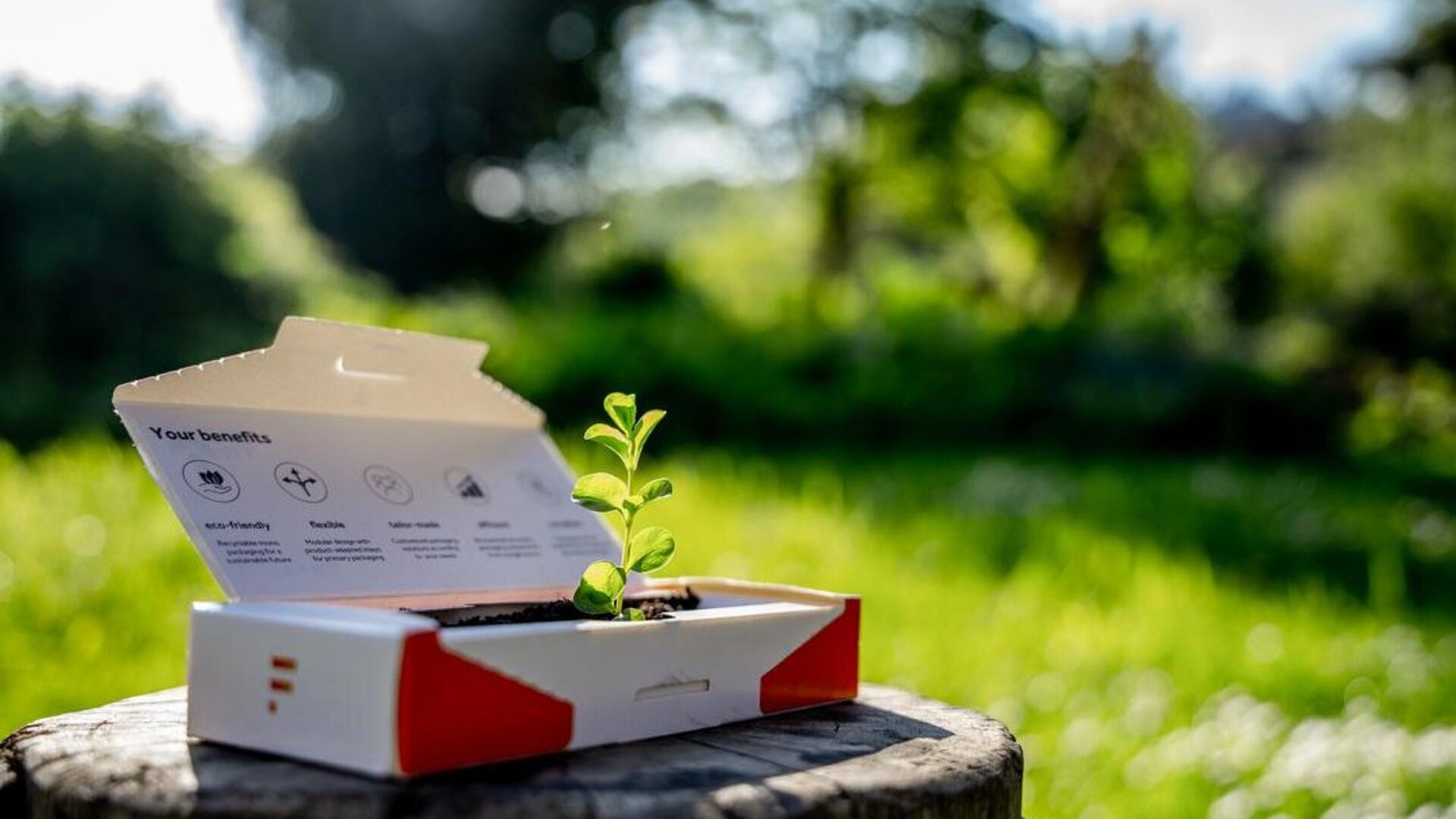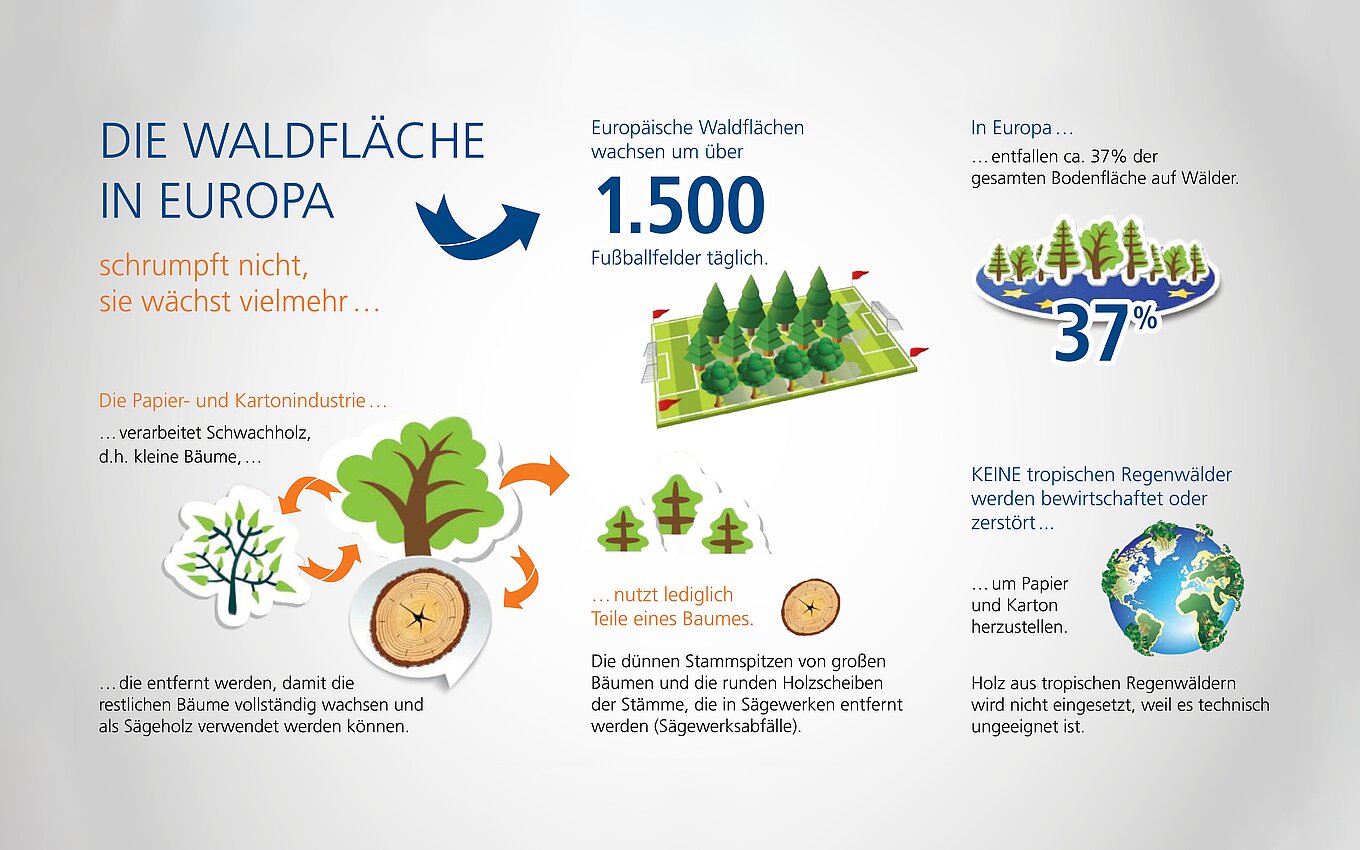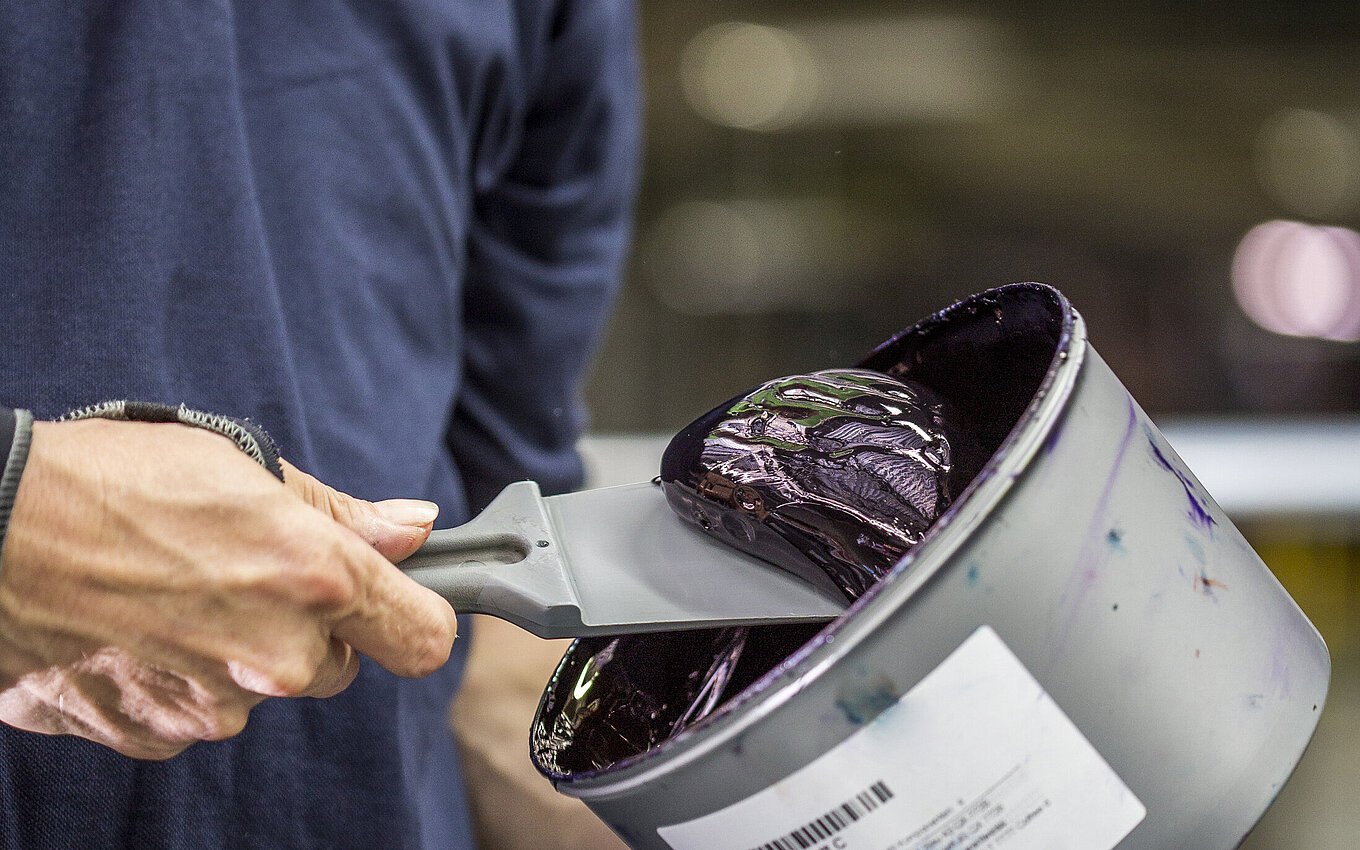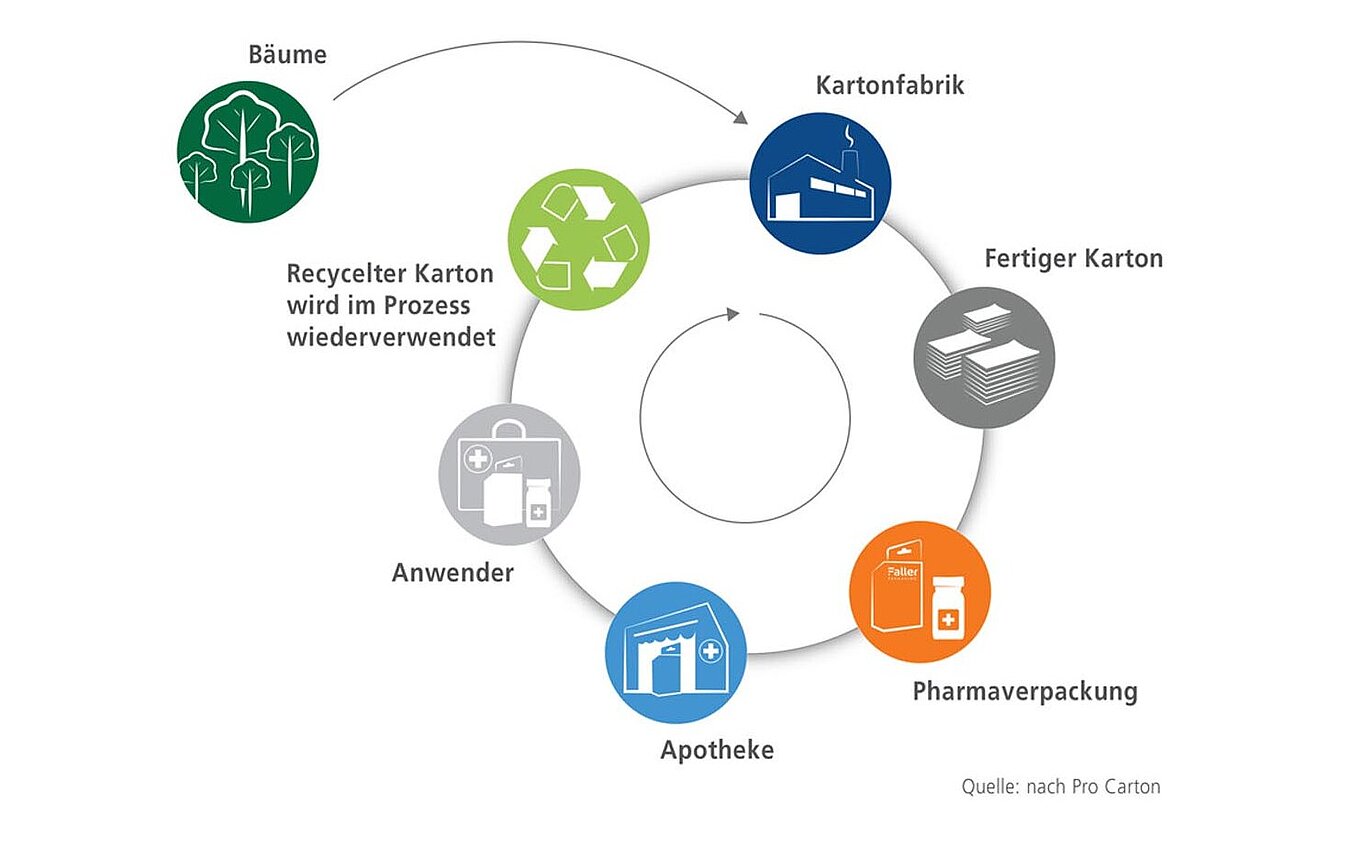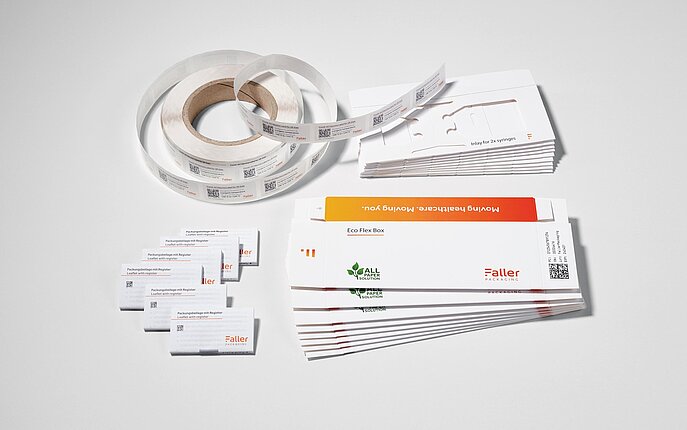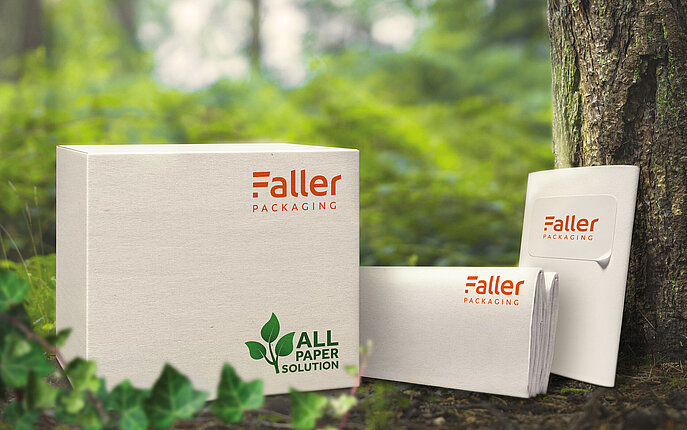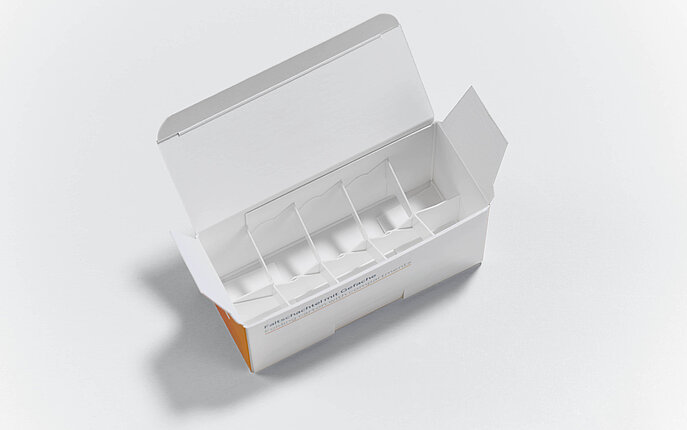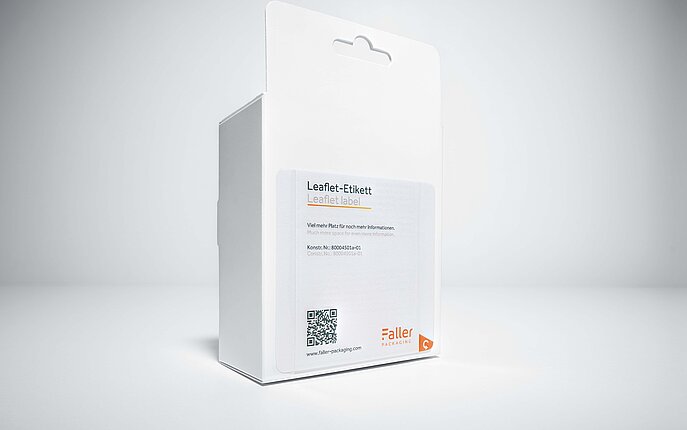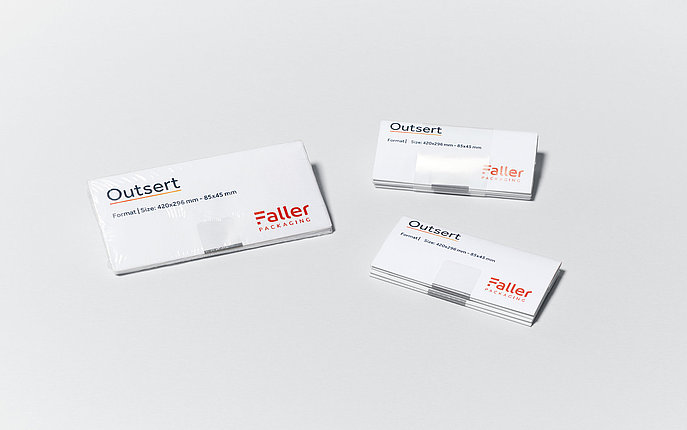For environment and health care
Our sustainable business model
Our business model is fundamentally oriented towards sustainability. We create value for our customers and for society by producing indispensable products for our healthcare system from renewable raw materials.
Fibre-based raw materials are used to make packaging for the pharmaceutical and healthcare industries that can be recycled very well and replace plastic. We are also increasingly offering services that help other companies in our supply chain to create more sustainable value.
Our innovation management specifically drives the development of new, sustainable products and services. As a value-oriented family business with a 140-year history, Faller Packaging also has a tradition of sustainable financial planning, efficient management and an above-average equity ratio.
Cardboard and paper are sustainable packaging materials!
Pharmaceutical packaging and leaflets from Faller Packaging are made exclusively from cardboard and paper. We have also developed solutions for our labels that dispense with the usual film laminations and are 100% recyclable.
More than half of all European consumers see cardboard and paper as the most sustainable packaging material alongside glass, plastic and metal (Pro Carton study). In addition to the origin of the materials, disposal or recycling is also decisive here. After all, most packaging is only used once and for a short time. It is therefore worth taking a closer look at the life cycle assessment of the various materials.
The fibres obtained from wood for the production of cardboard come exclusively from sustainable and mostly certified forestry. No tropical rainforests are destroyed, but weak wood and sawmill by-products from European forests are used.
Between 2005 and 2020, 58,390km² of European forest has grown back, equivalent to 1,500 football pitches or the area of the Netherlands.
Our material diversity includes virgin fibre as well as recycled fibre-based cardboard.
Faller Packaging uses optimised printing inks and varnishes according to the Cradle to Cradle® principle. The Cradle to Cradle® principle stands for biological and technically closed cycles in order to produce no waste and to conserve valuable raw materials.
The Cradle to Cradle® principle stands for biological and technically closed cycles in order not to generate waste and to conserve valuable raw materials.
- The printing inks do not contain any toxic heavy metals.
- Offset inks are based on renewable raw materials and contain no mineral oils or aromatic solvents as constitutional components
- Printing inks, varnishes, dampening solution additives and associated additives meet the criteria of the EuPIA exclusion policy
The European paper industry as a whole uses 87% renewable raw materials, of which 46% is recycled paper fibre and 40% is virgin groundwood. 90 % of the wood comes from the European Union, 60 % from forests certified as sustainable by independent third parties. (Source: Pro Carton)
In Europe, 87% of all paper and cardboard packaging is recycled. 82 % of the waste collected on European beaches is plastic, according to the European Environment Agency, but only 2 % is paper or cardboard. Paper-based packaging can degrade within months once it enters the environment, while plastics take decades or even centuries to degrade. (Source: Pro Carton)
